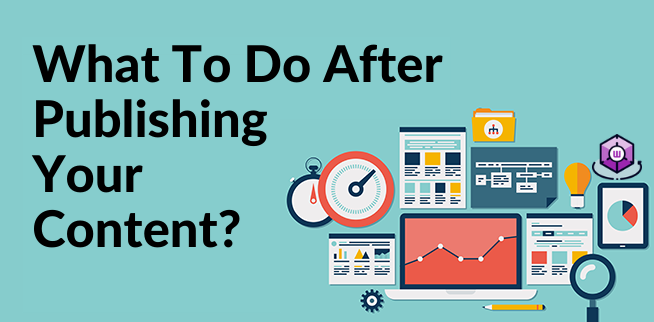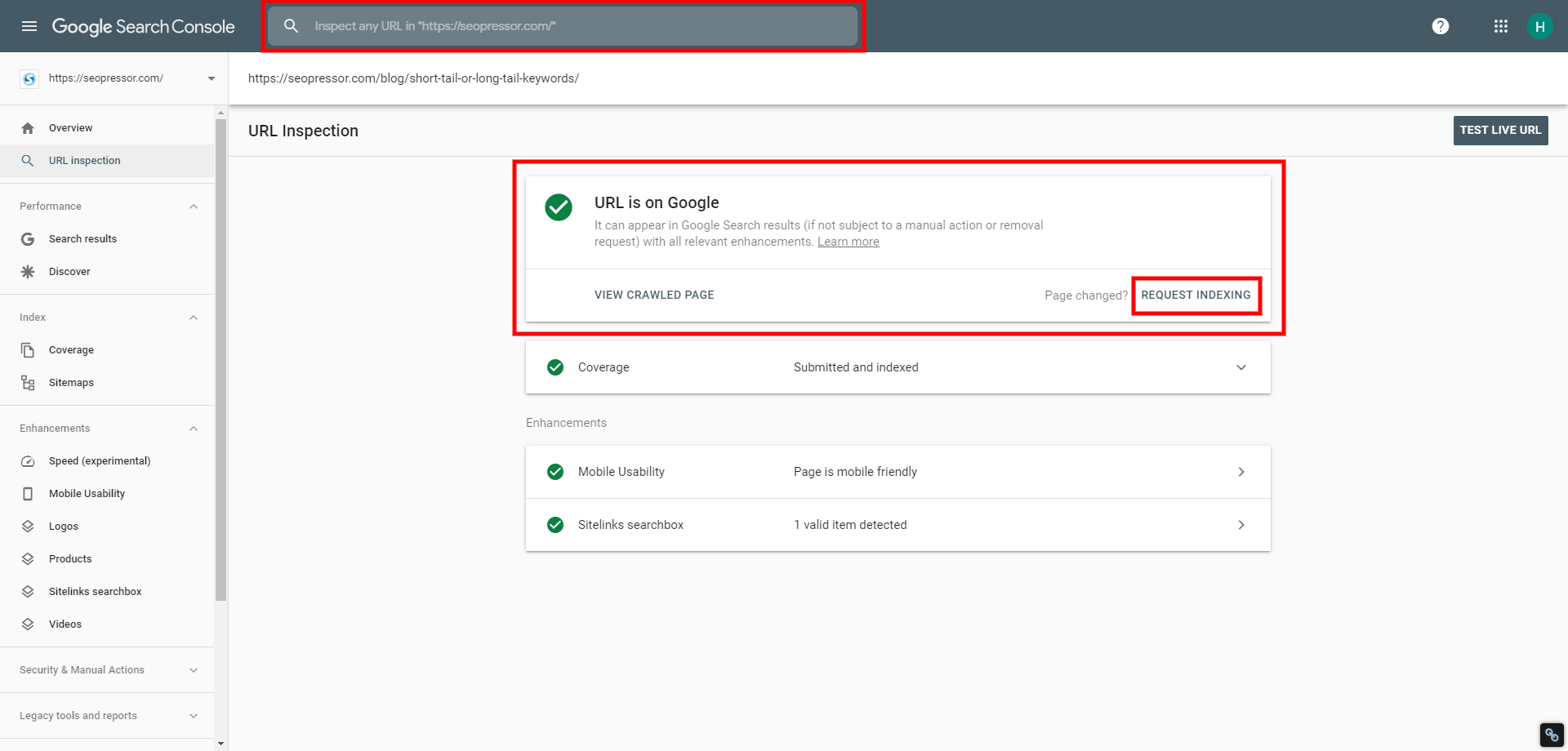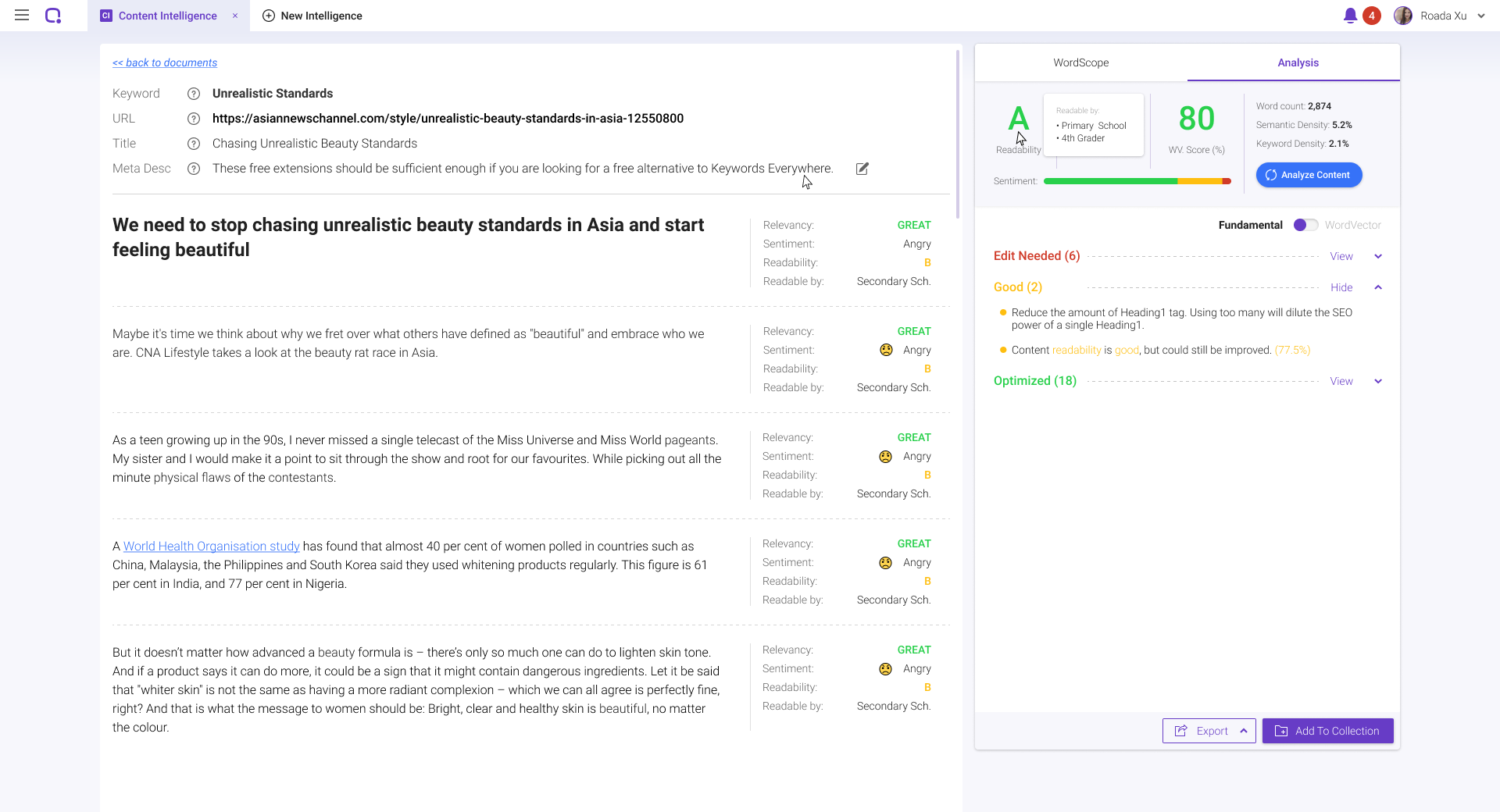Steph W. from SEOPressor


...help you check your website and tell you exactly how to rank higher?


74
score %
SEO Score

Found us from search engine?
We rank high, you can too.
SEOPressor helps you to optimize your on-page SEO for higher & improved search ranking.
By vivian on November 7, 2019

Marketing legend, Seth Godin, calls content “the only marketing left”. He defines it as connection, and at heart, that’s precisely what your content marketing strategy needs to achieve at every phase of promotion. After publishing your content, don’t make the mistake of thinking you’re done.
Now, without the following 9 steps, your marketing strategy is unlikely to grow wings.

Search engine optimization needs to be handled in an organic way, by building on the keywords you already own. If you’re patient and determined enough, it’s easier to gain the first position with those kinds of search terms than ones that a thousand others are using. Your brand and domain names have power.
The White Pages approach entails three general steps:
With Hummingbird cutting out black hat SEO techniques, it’s fairly pointless to use keyword spamming to try to get a crowded keyword onto the front page. It can damage the SEO rank semi-permanently, too, so it’s not worth the risk.
Metatags, articles, and phrases used in fantastic content will help you to gain rank, but building your content outside your own website will benefit you more. Blogging and sites like Hubpages and YouTube can be used to build an organic presence by capitalizing on the rank of other sites.
Your tech team should be contributing to your rank by using CSS and headers correctly. Nothing contributes to SEO quite as well as excellent content, which is why Seth Godin claims that today’s brands need editors, not marketers.
Your strategy needs seven elements:
Also, remember to check if your webpage looks good on mobile and whether or not it is mobile-friendly. Google loves pages that are mobile-friendly. In fact, Google has introduced mobile-first indexing this year, which indexes and ranks content based on its mobile version.
To check if your webpage is mobile-friendly, simply use Google’s tool: Mobile-Friendly Test.
The result will also tell you the issues on your site so you can get them fixed.
Now, most webmasters wait for Google bots to crawl their websites after publishing a content. Upon reading the heading, some of you may be wondering that if Google will find your webpages and index them eventually, why to bother submitting your content to Google Search Console (GSC).
Well, you’re right. Google will find you and have your webpage indexed eventually. But, indexing depends and varies across several factors such as the history of the website. If the website is considered good, they tend to get indexed by the search engine quicker.
Generally, we want to get seen in the search engine as soon as possible because that’s when we can start seeing results.
So, here’s how you can submit your content to GSC for indexing. Firstly, log in to GSC. Next, you will see a search bar at the top. Simply just enter your URL and it will let you know whether or not your webpage is on Google. If it’s not, you may select ‘Request Indexing’. Simple as that!

It is important to do content optimization after publishing your content. It gives you a second chance to make your content more attractive to the search engine and users.
Let me share with you how we usually do our content optimization using BiQ’s Content Intelligence.
First, enter your target keyword and page URL.
Then, it will return with a full analysis of your content. You can see there are three important parts of the analysis.

The first section would be the paragraph by paragraph analysis. The paragraph is divided into sections, and you can see their relevancy, sentiment, and readability.

Next, you will see an overview of your content performance, including readability, sentiment distribution, word count, semantic density, and keyword density.

Lastly, you can switch to the analysis tab analysis to check on the WordVector and Fundamental SEO optimization.

You can use all the insight to guide you in optimizing your content. If you are not sure where to start, you can check out the content optimization suggestions at the ‘Edit Needed’ tab. These are usually critical errors that hinder your content from ranking higher.
Try Content Intelligence for free now!

You can create the kind of content that’s virtually Pulitzer Prize-worthy and still have a failed marketing strategy because, without an audience, you have zero marketing value. Marketing has changed its identity several times since the internet became a household norm, and currently, at its core, it’s all about forming human connections.
That’s why social media have become such a potent force. Networks like Facebook and Instagram aren’t fads. They’ve achieved full market penetration and are used by 3.6 billion people across the globe.
No campaign is complete without them, but how do you use them?
Each social network has its own benefits and demographics. Facebook has overtaken YouTube as the most popular video uploading platform, but YouTube remains the second most popular search engine on the planet. If you’re using video as part of your content, both networks need to be considered.
If, however, you’re an e-commerce entrepreneur, no network is more effective than Instagram. Half of its audience is younger than 29, which narrows your target market significantly. Pinterest is an alternative network for e-commerce sites.
Its audience is primarily made up of female users, making it ideal for businesses marketing visual products such as décor. Eighty percent of those who use Pinterest make a purchase as a result of what they’ve found there.
The fact that mobile usage has leaped into the billions has astronomical implications for marketers given that clients can now access how-to content and explainer videos on the spot, no matter where they are. There are 1.6 billion mobile social media users worldwide, so a significant number of consumers are using WhatsApp and kik to access branded content. Marketers are flocking to both in droves.
Users of digital communities are being bombarded with content, but there are some sites that still have plenty of value:
Community marketing gives you a budget-friendly way to launch a new brand. Nike, Google, and Starbucks used this technique. Sharing content through communities is particularly good at building loyalty, word-of-mouth advertising, and analytics. Community marketing does demand plenty of legwork, though. You need to build a passionate audience, and that means making sure your sharing happens as a dialogue with your users, not a monolog.
It is possible to republish your own content without being flagged for spam. Duplicate content, published on a well-established website, can benefit your rank and give you valuable backlinks. Think about submitting it to the leading sites in your industry, but be aware that many of them want first publication rights.
One of the risks of this technique is that your republished content will outrank your original, but this is easily overcome by syndicating only after your first posting has drawn enough traffic. If you can’t overcome the problem that way, use a scraper report tool to let Google know. A rel-canonical tag and link back to your original content also help you to retain the rank you’ve built with your first post.

Link building has not yet become an endangered species. On the contrary, it works perfectly with Google’s three new algorithms, Hummingbird, Penguin, and Panda 4.2. Moz describes links as the streets between pages. They were once used as a black hat technique, but it’s still possible to benefit from them in a more ethical way. Spam links generally go both ways, but earned backlinks will eventually improve your SEO score.
Involve your PR department in this aspect of your campaign by interviewing industry experts who will provide high-value links to your content. Let major publications in your sector know about your content. Use social media to earn the sharing of links via blogs and networks. This latter technique won’t build your rank instantly anymore, but once a pattern of links has been created, it should increase your search engine ranking.
Link signals eventually decay, and broken links are severely penalized by Google, so make sure yours are constantly updated.

Content marketing is a relationship building tool, so distributing your articles, images, and videos is not enough to position your brand. Influencer marketing should be built into your strategy, but other forms of content can help you to connect with your larger demographic.
Social networking is the most obvious of these, but don’t underestimate the value of webinars, events, and classes. Keep your inbound marketing campaign en pointe, using emails and customer service initiatives to earn loyalty from your existing buyers. 80% of your business comes from 20% of your customers, so you need to focus on winning loyalty.
Metrics like page views, return visits, and bounce rates will help you to quantify your customer loyalty and engagement. Ideally, you’ll connect with your clients at every stage of the marketing funnel, from the first point of contact to aftersales service.
Content marketing is only as effective as the level of engagement it achieves, so this needs to be one of your primary goals. Mediocre content creates mediocre engagement. Be relentless about producing superb content, and half your engagement problems will be solved.

We live in an era of big data, so marketing analytics have become a core part of every campaign. Predictive analytics are used by 89% of B2B marketers, but let’s focus on traditional digital analytics. Your data needs to help you find solutions and improvements to your strategy. Don’t only look at clicks and purchases, but return on investment as well.
High bounce rates will highlight potential glitches in your site’s design, while content auditing should be used to increase your search ranking. Sites like SEMrush will identify errors.
Social media listening tools help you keep an eye on your social network sharing, letting you know what the chatter about your brand is and giving you the opportunity to respond. Your content analysis should answer five questions:
Other than that, you may also want to monitor your content performance on the search results because this will tell if your SEO strategy is really working.
Fortunately, we have the right tool to do this. Introducing BiQ’s Rank Tracking.
Once you added the keywords that you want to track, you will start to see the historical performance of your rankings.

The product will also show you the pages that are ranking for the keyword together with their trends and position on search results.

Switch to the ‘Pages’ tab if you want to check how many keywords are ranking for a particular page. You will also get to see a snapshot of many keywords that the page has gain or loss, and the average position.

Use these insights to direct your efforts and resources in the right places. Start with improving the content that is already ranking on the first page but is yet to dominate the first spot.
Get your free access to Rank Tracking here.

Your content will eventually lose its relevance and accuracy, and it’s crucial that you keep it up to date because Google is quick to punish for this kind of laziness. Even if you’re producing evergreen content, odds are good that you have some broken links that could lead to a massive black mark against your name with search engines.
Updating is labor-intensive work, but luckily, you have your analytics to highlight the top-performing posts on your site. Those are the ones you need to prioritize. Check which pages or posts achieved the most inbound links to start with. Page performance on external sites and shares on social networks will also guide you.
Make sure your content still incorporates popular, relevant keywords. Yesterday’s awesome search phrases are tomorrow’s digital trash, so create a schedule for checking the effectiveness of those you’re using. Avoid the rank loss involved in duplicating content by publishing your updated work onto the same page. Don’t forget to review the meta description for relevancy and accuracy.
Too many content marketers think that their job is done after publishing a post but that’s not true. They think that instead of revisiting old posts, they should just spend more time and effort creating and publishing their next blog post.
The truth is, no matter how good of an author/writer/content marketer you are, there are many metrics that you could never tell until after you publish your blog post. By ignoring your post after publishing it, you are missing out on all the chance to optimize your content to really bring results. You are also maximizing the potential of each blog post by doing these 9 things.
It might be tedious to do all of these for all your blog posts, especially when you are publishing more and more content. This is why keeping an editorial calendar is a great idea to help you plan and keep track of what you need to do, when you need to do, and how often you need to do these tasks.
However you plan to do this, just make sure you don’t get lazy and skip them. Not doing all these tasks means you are wasting all the effort that you’ve put in to create those content, and not reaping its full benefits.
Updated: 1 July 2025


Save thousands of dollars (it’s 100x cheaper)

Zero risk of Google penalty (it’s Google-approved)

Boost your rankings (proven by case studies)
Rank High With This Link Strategy
Precise, Simplified, Fast Internal Linking.
